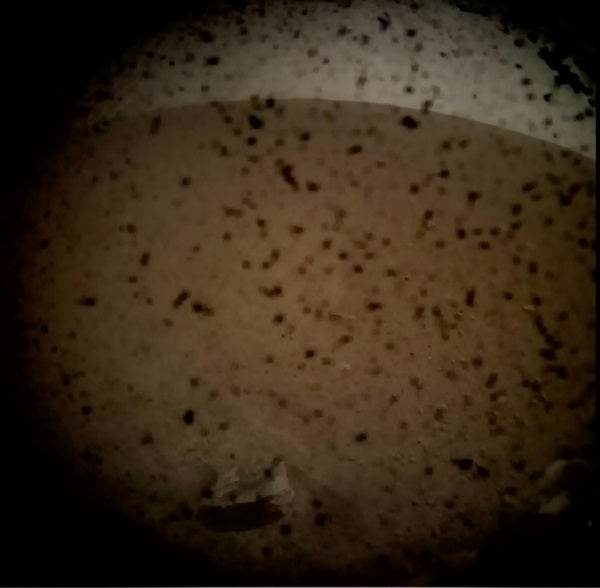Touchdown on Mars
NASA’s InSight lander has endured almost seven months in space, traveling over 300 million miles (480 million kilometers) in a carefully calculated path from Earth to Mars. After its lengthy journey, the probe has finally and successfully touched down on the martian surface.
The InSight probe launched May 5 from the Vandenberg Air Force Base on California’s central coast. With a host of scientific instruments on board, the lander will study the Red Planet’s interior, gathering groundbreaking data about Mars’ composition and the planet’s tectonic activity.
At 2:54 EST, InSight — which stands for Interior Exploration using Seismic Investigations, Geodesy and Heat Transport — landed on Mars. During its descent towards the martian surface, the probe first entered Mars’ atmosphere 80 miles (129 km) above the surface. At about seven miles (11 km) up, InSight deployed its giant parachute to decrease speed as the craft neared the surface. Less than a minute later, InSight cut its parachute free and its 12 retrorockets fired, providing the probe with an additional braking force and allowing it to settle neatly onto the planet’s surface.
A Tense Landing
NASA engineers were forced to wait until the landing was over to know whether it was successful, as there’s an eight-minute delay in communications between Mars and Earth and the landing only took about seven minutes. So, from the time when the craft entered Mars’ atmosphere until touchdown, JPL engineers anxiously crossed their fingers, not knowing the real-time status of the craft. For these seven long minutes, dubbed the “seven minutes of terror,” the engineers waited to confirm whether the probe had landed safely — which, thankfully, it had. “It was intense, and you could feel the emotion,” NASA Administrator Jim Bridenstine said in a NASA livestream about the landing’s success. This tension quickly turned to excitement once InSight landed, however. “The enthusiasm here is incredible,” Bridenstine said.
The InSight mission team waited and “watched” for the probe’s landing by monitoring InSight’s radio signals with radio telescopes on Earth and a variety of spacecraft, according to a NASA press release. Two of these spacecraft, known as Mars Cube One, or MarCO, transmitted the landing process and even an image from InSight of the martian surface immediately after landing. Additionally, the mission team hopes to have more images in approximately five hours.
Settling In
InSight’s first few days on the Red Planet won’t be as eventful as the probe’s nerve-wracking descent and landing. In fact, it will be two to three months before InSight’s robotic arm even sets its instruments on the martian surface, according to NASA.
“It’s taken more than a decade to bring InSight from a concept to a spacecraft approaching Mars — and even longer since I was first inspired to try to undertake this kind of mission. But even after landing, we’ll need to be patient for the science to begin,” Bruce Banerdt of the Jet Propulsion Laboratory, InSight’s principal investigator, said in a statement.
But while researchers will have to wait patiently for scientific data, InSight will still capture valuable information soon after landing. Before its scientific instruments can deploy, InSight will photograph and survey the terrain and environment surrounding it. This will allow NASA engineers to monitor Elysium Planitia, InSight’s “perfect,” “vanilla” landing site.










